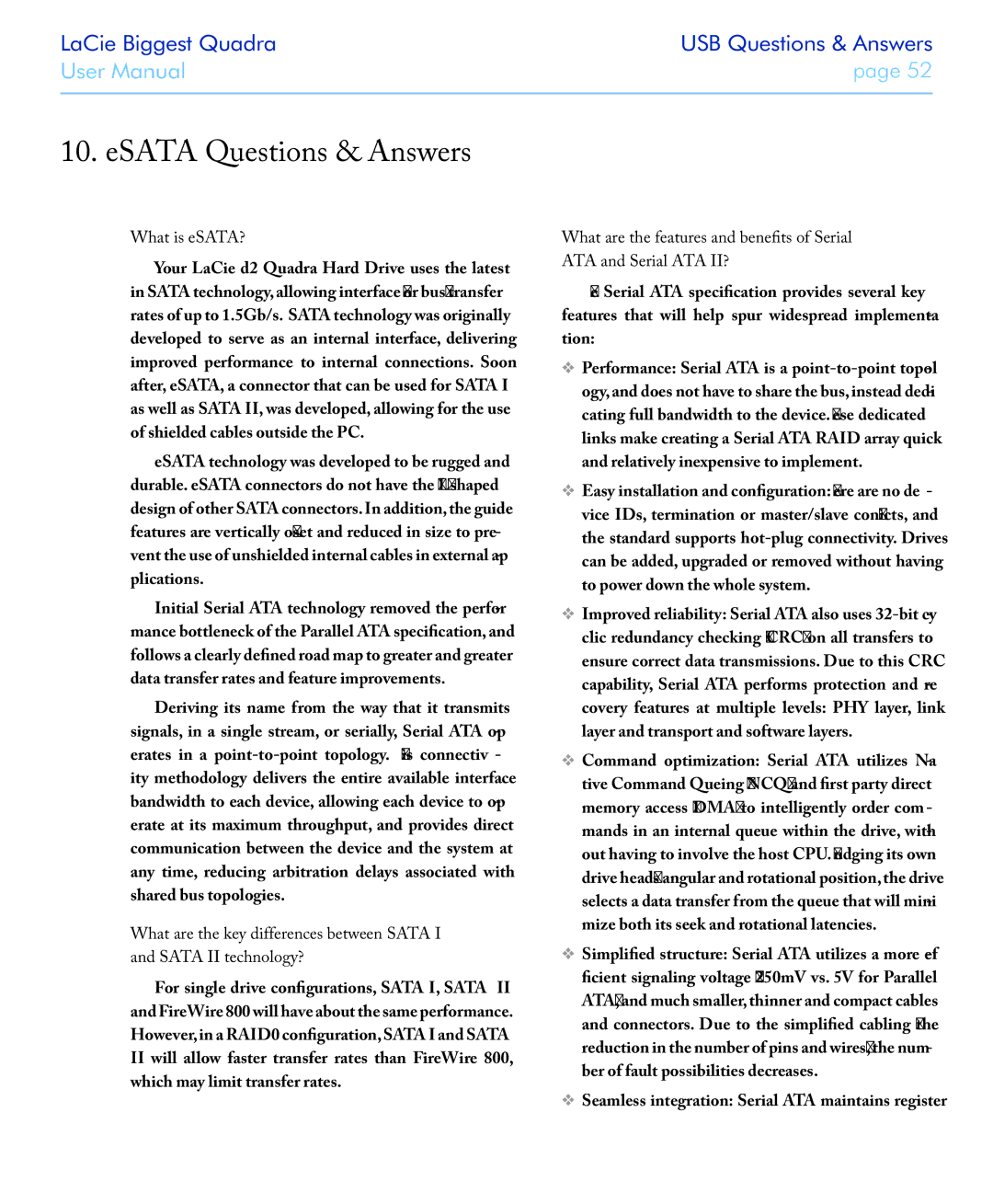LaCie Biggest Quadra | USB Questions & Answers |
User Manual | page 52 |
|
|
10. eSATA Questions & Answers
What is eSATA?
Your LaCie d2 Quadra Hard Drive uses the latest in SATA technology, allowing interface (or bus) transfer rates of up to 1.5Gb/s. SATA technology was originally developed to serve as an internal interface, delivering improved performance to internal connections. Soon after, eSATA, a connector that can be used for SATA I as well as SATA II, was developed, allowing for the use of shielded cables outside the PC.
eSATA technology was developed to be rugged and durable. eSATA connectors do not have the “L” shaped design of other SATA connectors. In addition, the guide features are vertically offset and reduced in size to pre- vent the use of unshielded internal cables in external ap- plications.
Initial Serial ATA technology removed the perfor- mance bottleneck of the Parallel ATA specification, and follows a clearly defined road map to greater and greater data transfer rates and feature improvements.
Deriving its name from the way that it transmits signals, in a single stream, or serially, Serial ATA op- erates in a
What are the key differences between SATA I and SATA II technology?
For single drive configurations, SATA I, SATA II and FireWire 800 will have about the same performance. However, in a RAID0 configuration, SATA I and SATA
IIwill allow faster transfer rates than FireWire 800, which may limit transfer rates.
What are the features and benefits of Serial ATA and Serial ATA II?
The Serial ATA specification provides several key features that will help spur widespread implementa- tion:
❖Performance: Serial ATA is a
❖Easy installation and configuration: There are no de- vice IDs, termination or master/slave conflicts, and the standard supports
❖Improved reliability: Serial ATA also uses
❖Command optimization: Serial ATA utilizes Na- tive Command Queing (NCQ) and first party direct memory access (DMA) to intelligently order com- mands in an internal queue within the drive, with- out having to involve the host CPU. Judging its own drive head’s angular and rotational position, the drive selects a data transfer from the queue that will mini- mize both its seek and rotational latencies.
❖Simplified structure: Serial ATA utilizes a more ef- ficient signaling voltage (250mV vs. 5V for Parallel ATA), and much smaller, thinner and compact cables and connectors. Due to the simplified cabling (the reduction in the number of pins and wires), the num- ber of fault possibilities decreases.
❖Seamless integration: Serial ATA maintains register
